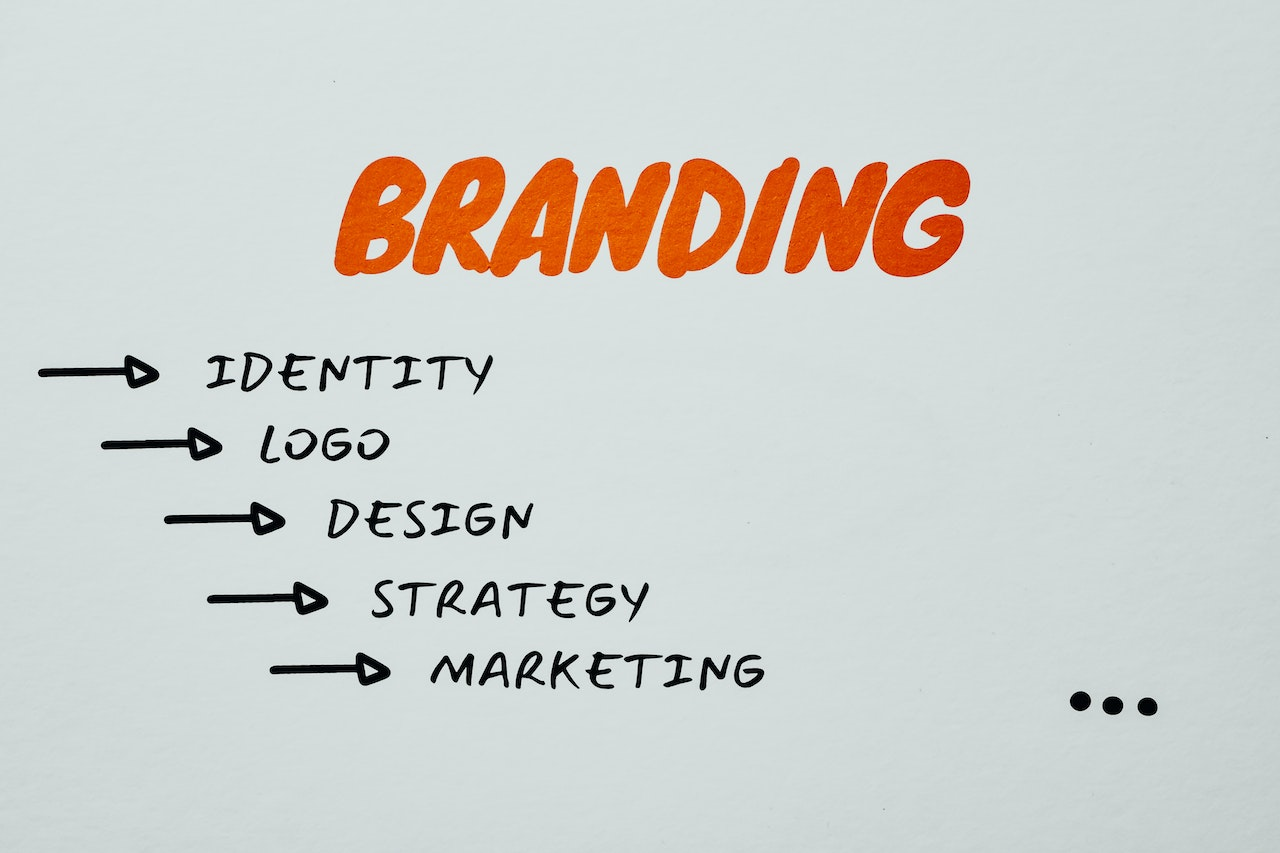
7 Marketing Strategies for Creating Successful Sponsored Content for Your Brand
Last update: 10 January 2024 at 04:15 pm
As more companies recognize the value of building brand recognition, they must go beyond traditional marketing techniques to achieve customer loyalty and gain attention. This has prompted organizations to embrace sponsored content marketing—such as videos, podcasts, blogs, articles, and even live streams—as an effective way to engage audiences, express the company’s values, and communicate its unique identity.
Sponsored content has a long history, dating back to print publications. However, integrating this type of content into various digital platforms, such as television shows, digital articles, podcasts, and YouTube, has dramatically improved since the advent of digital content.
In this article, we’ll provide samples of marketing strategies for sponsored content, a guide on how to utilize them, and some advice on making the most out of your content. Let’s begin!

1. Find influencers who reflect the same values and mission as your company.
Influencer marketing is a great way to improve your brand’s online presence and get people talking about you to your ideal customers. Promoting your products or services through influencer content can increase traffic to your website and turn visitors into paying customers.
The best part of this is that it’s a win-win for everyone. The content creator, brand, and customer all benefit from the arrangement. As the content creator receives funding, the brand generates awareness, and the customer receives value.
It’s also very crucial to take your time to research and examine the influencers and ambassadors you’re considering. If you can, look at their previous content, campaigns, and engagement to decide if they can benefit your brand.
Where to find influencers?
Influencers can be found everywhere, from social media to popular streaming platforms. It’s important to pick the right influencers and brand ambassadors. Reach out to sponsors or influencers whose followers are similar to your target market and who can resonate with your customers.
The first place you should look is an influencer marketplace. An influencer marketplace is a website that allows brands, marketers, and other businesses to search for the perfect influencer.
Here you can search by categories, such as influencer follower count, industry expertise, or interest. This allows you to find an influencer that’s perfect for your brand’s needs. Another option is to look for bloggers who might be interested in your product.
Bloggers are individuals who create their blogs and share opinions or knowledge content related to your product. This is a great way to reach out to influencers who have a direct connection with your product.
Podcasts, events, and conferences are also great places to find influencers. At these events, you can meet influencers who are already interested in the topics related to your product. It’s also a great way to network and build relationships with people in the same industry.
Finally, you should consider Linkedin. Linkedin offers a vast network of professionals who are open to being contacted by brands. Professional influencers on Linkedin have huge networks of contacts, and they are often willing to promote brands or products they believe in.
2. Develop your unique brand identity
Your brand identity represents the core of your company’s identity. People often confuse the term “brand” with a logo, but a logo is just a visual representation of a business. The concept of brand identity encompasses more than just a symbol. It covers the essence of the company, its values, and its overall personality.
When planning a strategy for marketing sponsored content, it’s still important to stick with your brand identity. Brand identity or brand essence refers to the characteristics that make a business different from its competition and easily identifiable to its customers.
Creating a distinct yet recognizable brand identity is essential for ensuring that your company stands out from the competition and that customers can quickly recognize and associate with your brand.
When creating sponsored content, you want it to look distinctly “you” but feel more like a natural part of a website. From the look and feel of a corporate website and social media posts/accounts to storefronts and great customer service, your brand should be a consistent and recognizable presence.
You should also aim to incorporate it into your advertising campaigns, pricing strategies, and internal and external communications.
It should also be designed to be seen as a suggestion or recommendation from a trusted source rather than a blatant advertisement. This will cultivate a sense of trust between the brand and the reader while providing value.
A company that has a strong brand identity will be more likely to be remembered by customers and can also influence customer loyalty. If a customer trusts and recognizes a brand, they are more likely to purchase from them. A strong brand identity can also make it easier to target specific customer groups and create trust in the company.
3. Figure out which platforms are best suited to your content
To know the best social media platform for your brand, do a little research on your audience. Check and see if your customer base is on the platform, if they’re actively engaging with brands, and if the platform matches the personality of your brand.
You must also consider your goals, target audience, and branded content type. Different platforms have different strengths and are used by different demographics, so it’s important to select a platform that aligns with your goals and content type to reach your target audience effectively.
Let’s say you’re looking to target young women. In that case, Instagram would be an excellent choice for you. Instagram tends to attract more women and has a higher user base of people under 25 years old compared to others.
Similar to sponsored tweets, sponsored pins are a form of advertising on the visual discovery platform Pinterest. Businesses and organizations can pay to have their pins promoted to a broader segment of users, thereby allowing for the targeting of consumers who could have an interest in the promoted products or topics. This is an effective way of amplifying your message to an interested and engaged constituency.
Tiktok
TikTok is famous for its short video content. It is similar to Pinterest and Instagram and is ideal for businesses that focus on visuals, such as art, food, retail, beauty, and some service sectors. The majority of TikTok’s user base is comprised of young individuals, making it an effective platform for reaching the 18-24 age bracket and increasing brand recognition.
But, if your brand is B2B oriented, then LinkedIn might be a better fit for you as it’s primarily designed for professionals and businesses to connect. Today, there are tons of popular marketing tools list used alongside LinkedIn. Using these with marketing on LinkedIn will help you maximize your marketing efforts.
X (Twitter)
Sponsored tweets are also great, especially if your target audience is males between 25-34 years old. Brands and companies can pay to have their tweets promoted to a wider audience, and this can be a good way to reach a large number of people in a short amount of time.
Snapchat Stories
Snapchat stories are a popular feature on the ephemeral messaging app Snapchat. Brands and companies can use Snapchat stories to create sponsored content in the form of short videos that are only available for a limited time.
Facebook Stories
Facebook stories are similar to Snapchat stories, and they allow brands and companies to create sponsored content in the form of short videos that are only available for a limited time. Maximizing Facebook’s sponsored posts is a fantastic way to reach your desired audience and increase sales.
YouTube Videos
YouTube is the world’s largest video-sharing platform, and brands and companies can use it to create sponsored content in the form of videos. This can take the form of a traditional TV commercial or a more creative, viral video.
You might need to keep a solid online presence on several of these social media channels. In this case, it’s recommended to use some of the best social media management tools to schedule your posts in advance.
4. Choose the appropriate content format.
The amazing thing about content is that the possibilities are endless! For example, you can take a sponsored content idea and present it in so many different ways. It could be sponsored articles, a visually appealing image, a video, an infographic, a slideshow, etc. Every content format has its own advantages and disadvantages.
Videos
Because videos are so engaging, they can often lead to higher levels of conversions compared to other forms of advertising. However, videos can be costly to create compared to other content formats and take a long time to produce. And it’s hard to embed native ads on videos.
Photos
Sponsored images are an effective way to market products or services. It is especially useful for businesses in the fashion, beauty, or food industries, as the visual appeal of these products can be brought to life with pictures.
Articles
Sponsored written content is a great way to make a connection with an audience without being overly forceful. If people are willing to take the time to read a lengthy article, they are more likely to be influenced by it than by a single sponsored image they may just glance at before moving on.
Infographics
Infographics are a great way of effectively communicating information in a visually attractive way. They are useful for showing data and statistics or even helping people comprehend complex topics in a straightforward and understandable way.
Web content
You can also include sponsored content on your site in the form of sponsored articles or native ads. Here are some amazing sponsored content examples that are disguised as organic content, making them appear to be part of the website and not obviously promotional.
Before you decide which type of content to use for your marketing efforts, you should carefully weigh the pros and cons of each option.
5. Plan ahead with a range of strategies for versatility
The significance and prevalence of content marketing have increased in recent years due to the fact that consumers are finding it easier to ignore traditional advertising methods, such as skipping over commercials or flipping through ads.

Sponsored content marketing involves a company creating valuable and relevant information that appeals to its target audience and delivering it under its brand, building recognition and credibility for the company. However, despite recognizing the benefits of sponsored content marketing, many companies struggle to implement it in a structured and effective manner.
A content marketing strategy allows you to set tangible goals, measure results, and develop processes to improve continually. This is a much more efficient approach than simply creating content without any strategy or plan.
Why it’s important to be versatile and flexible?
When it comes to your marketing strategy, it pays to be flexible. Try to maximize your campaign performance with a not-so-rigid approach. Stay up-to-date with the latest trends and changes in your industry. Follow relevant blogs, websites, and social media accounts to stay informed about what’s new and what’s important.
Continuously refine and enhance your marketing strategy based on the results of your sponsored post. Adjust your strategy according to what proves effective and what doesn’t, and experiment with new techniques to reach your target audience.
Now is also the time to break away from traditional methods of advertising, such as billboards, commercials, and magazine ads, and explore new possibilities, such as native ads and sponsored content on social media platforms.
6. Add stories or opinion pieces to make your content come to life
When was the last time an ad made you emotional and brought you to tears? Such striking and unforgettable commercials are the most successful when it comes to increasing brand recognition. It is peculiar to consider that we can be moved to tears by something that is simply promoting a product or service for sale. But it’s possible.
Unlock the emotions of your audience through the captivating power of storytelling. Narratives about individuals can be quite impactful—listeners enjoy learning about others. However, for this to be successful, the story has to be both interesting and relevant.
Another form of interesting branded content is opinion pieces. Many businesses hesitate to write opinion pieces for their sponsored content on social media platforms. This is understandable in some cases when dealing with contentious matters. Nevertheless, expressing a standpoint, outlook, or another outlook does not have to be contentious.
It is simply a type of content that is subjective rather than objective. You can give your audience perspectives they have never thought of or guide them in understanding the various choices available to them.
7. Refine your ad strategy
It’s also important to consider the type of advertising you should do if you want to do sponsored content marketing (especially on social platforms). Native advertising (native ads) and sponsored content are two distinct kinds of advertising.
Native advertising is made by the business that wishes to promote its product, while sponsored content is any material that has been produced by a publisher, brand ambassador, or social media influencer.
Not all native advertising is time-sensitive. In fact, most native advertising content pieces can last a long time. They are hosted on webpages, like blogs, and may get more people to view them even after the ad campaign is done. In addition to content, native advertising can also take the form of paid inclusion in search engine results as part of a Search Engine Marketing (SEM) plan. This gives you a ton of content options to choose from and share on your channels.
Although sponsored content is a form of native advertising, it is usually part of a bigger plan from both the publisher and the partner. While native advertising is typically more focused on achieving immediate objectives, sponsored content is focused on selling a particular item.
It is also often a longer piece of sponsored content related to a brand, like an article or video, that appears on a publisher’s website. This type of sponsored content is meant to keep the audience interested and contains useful information that can educate or entertain. Despite this, both of them are considered forms of paid advertising.
8. Monitor results
Analytical tools that monitor customer activity and engagement levels such as a customer engagement platform can be an effective guide for devising a sponsored content marketing strategy. In order to accurately track your sponsored content marketing success, it is essential to have these tools in place.
There are two main ways you can measure results: ongoing analytics and campaign-focused metrics. Ongoing analytics involves continuous monitoring of your sponsored post activities to keep track of general discussions about your brand over time.

On the other hand, campaign-focused metrics help measure the effectiveness of specific marketing campaigns, and their goals can vary depending on the campaign. It is best to incorporate both ongoing and campaign-focused metrics to have a comprehensive social media measurement plan.
Not all tactics will be equally successful, and that’s okay. You can experiment with each one to determine which ones work best for your specific business. Once you identify the most effective methods, you can focus your efforts on those strategies and effectively market your business with sponsored content.
Strategy for Success
If you want your business to stand out from the competition, you can’t just settle for creating relevant and insightful content to boost website traffic—it’s time to start leveraging sponsored content marketing.
Creating a marketing strategy for your sponsored posts doesn’t have to be complicated. The methods outlined above are effective for all small and local businesses. With a bit of knowledge and effort, you can start seeing results.
FAQs
Sponsored content marketing involves creating and promoting content that is paid for by a third-party advertiser. This content is typically integrated into a platform’s regular content but is labeled as sponsored. The goal is to provide value to the audience while aligning with the advertiser’s brand and messaging.
An example of sponsored content is a blog post, article, video, or social media post that is created in collaboration with a brand or advertiser. The content is designed to be informative, entertaining, or educational, seamlessly incorporating the advertiser’s message or product in a way that resonates with the audience.
Sponsor marketing involves a brand or business financially supporting an event, content, or activity in exchange for visibility and promotional opportunities. This can include sponsoring events, podcasts, social media campaigns, or any marketing initiative where the sponsor’s brand is prominently featured.
The benefits of sponsored content include increased brand visibility, reaching a wider audience, building brand credibility through association with reputable content creators, and driving engagement. Sponsored content also allows brands to convey their message in a more subtle and integrated way, often resulting in a more positive reception from the audience.






